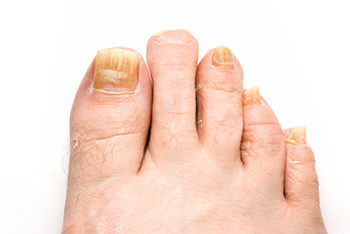Dallas Metro / North Texas
(214) 710-1028
Fungal Toenails
 Fungal infection of the toenail is called onychomycosis. This is a progressive disease where the toenail changes in quality and characteristic. Fungal organisms take hold of the nail causing changes of the nail plate such as discoloration, thickening, lifting, and malodor. If ignored, the fungal infection can spread into other nails and skin. The fungal infected nail plate that is thick may cause pain with pressure and while walking.
Fungal infection of the toenail is called onychomycosis. This is a progressive disease where the toenail changes in quality and characteristic. Fungal organisms take hold of the nail causing changes of the nail plate such as discoloration, thickening, lifting, and malodor. If ignored, the fungal infection can spread into other nails and skin. The fungal infected nail plate that is thick may cause pain with pressure and while walking.
Fungal microorganisms are ubiquitous; therefore, the toenails are vulnerable to contracting infection in moist environments where people are likely to be walking barefoot. Many patients contract fungal nail infections in areas around swimming pools, public showers, and locker rooms. Fungal infection may also be more likely to occur in nail beds that have been injured where there is repetitive microtrauma within the shoe. Sufferers of chronic diseases such as diabetes, peripheral vascular disease, or immunodeficiencies are particularly prone to developing fungal nail infections.
Fungal nails can be primarily prevented by practicing proper hygiene and regularly examining the feet and toes. Carefully washing the feet with soap and water and thoroughly drying the feet afterwards are essential. Hygiene practices such as wearing shower shoes in public areas, changing shoes and socks daily, keeping toenails clipped at a short length, wearing properly fitted shoes made of a breathable material, wearing moisture-wicking socks, and disinfecting home pedicure tools and instruments.
Treatment of fungal nails depends on the severity of the condition and may vary between patients. Initial treatment usually involve mechanical debridement and removal of the diseased nail tissue. Antifungal oral medications or topical antifungal medications may be obtained over-the-counter or be given as a prescription. Severe cases may require surgical treatment where the fungal nail is temporarily removed to provide relief and to expose the nail bed for application of topical antifungals. In other cases, a chronically painful fungal nail that has not responded to other treatments may be permanently removed.




